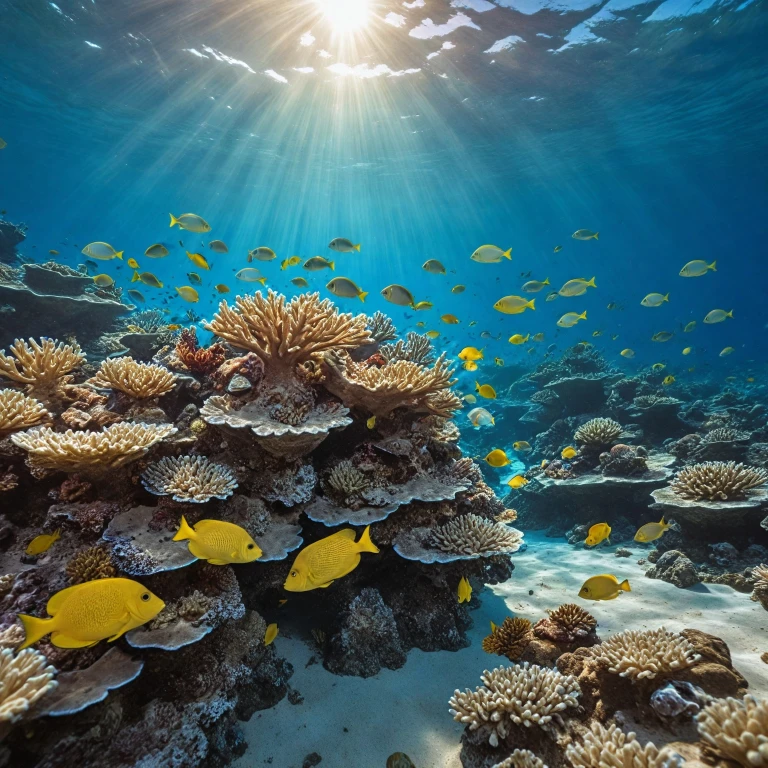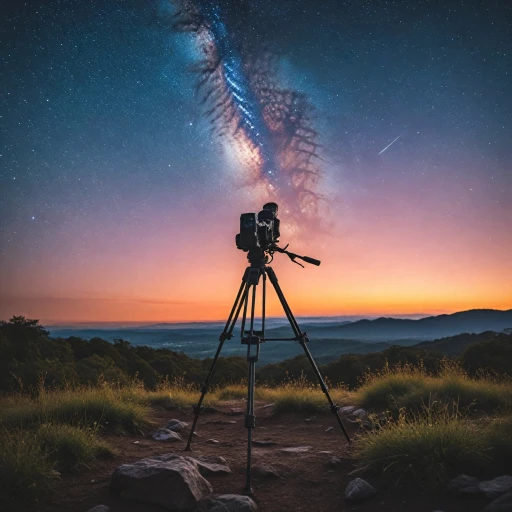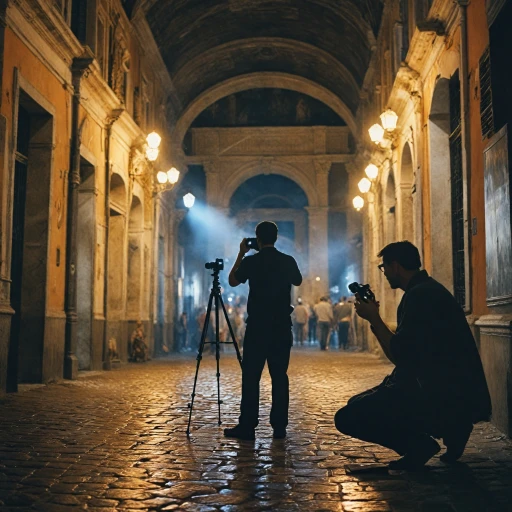
Understanding the Challenges of Underwater Photography
Unveiling the Unique Challenges of Aquatic Capturing
Diving into the realm of underwater photography unveils a myriad of challenges that differ significantly from terrestrial photography. When submerged, factors such as light absorption, color distortion, and the unpredictability of aquatic life present unique obstacles. To tackle these, specific equipment choices become paramount, from the selection of an appropriate underwater camera to housing options. Light diminishes quickly as you descend deeper into the water, demanding the use of external light sources to illuminate subjects effectively. Additionally, water scatters and refracts light differently than air, impacting image quality and necessitating gear that compensates for this environmental hurdle, such as specialized underwater housings and lighting systems. Furthermore, underwater photography often requires swift adaptability. The unpredictability of the sea and its inhabitants pushes photographers to be ready for spontaneous moments while diving. That’s where compact and mirrorless cameras shine, with their blend of versatility and portability. When comparing them with DSLRs, it's crucial to weigh the balance between image quality and ease of handling. Understanding these challenges leads to better informed decisions about essential accessories, like the diving-rated underwater housings from brands like Ikelite, which can provide the necessary protection and functionality for your camera underwater. To dive deeper into enhancing your photography experience, consider exploring the impact of enhancing audio quality with camera radio microphones in diverse conditions, ensuring your entire underwater shooting system is optimized for the best results.Key Features to Look for in Underwater Cameras
Essential Criteria for Good Underwater Cameras
When diving into the depths with a camera in hand, you need to ensure your equipment stands up to the challenges of underwater photography. When selecting an underwater camera, it is important to pay close attention to several key features that make a significant difference in capturing high-quality images beneath the sea.- Underwater Housing: First and foremost, a robust underwater housing is essential. This protects your camera from water damage and maintains image clarity. Many reputable brands like Ikelite have housing systems specifically designed for certain models, such as the Sony III or Canon EOS series.
- Lens Compatibility: Consider the wide angle and macro capabilities of the lenses available for the camera. This versatility is necessary for capturing both sweeping coral vistas and detailed shots of marine life. Brands like Nikon and Canon offer excellent lens options for underwater photography.
- Image Quality and Sensor Size: A full frame sensor can be advantageous for lower light conditions under the sea, as it tends to capture more light and detail, leading to higher image quality. The sensor size can significantly impact the results, especially when capturing video footage.
- Compact vs. Mirrorless vs. DSLR: While compact cameras are often more convenient for beginner divers due to their lightweight nature, mirrorless cameras and DSLRs provide flexibility and superior image quality. Reviews Sony cameras often highlight their prowess in underwater settings, offering a good balance between size and performance.
- Backscatter Reduction: Backscatter, caused by the reflection of light on suspended particles, can ruin a good image. Cameras that offer features or accessories to minimize this effect can result in clearer, more vibrant photos.
- Durability and Ease of Use: Given the tough environment, your chosen underwater camera should be durable yet manageable, with controls that are easy to operate even when wearing diving gloves.
Top Camera Models for Underwater Photography
Leading Underwater Cameras for TODAY's Enthusiast
Choosing the right underwater camera can enhance your underwater photography experience significantly. Several models stand out for their ability to capture awe-inspiring underwater scenes.- Sony Alpha Series (Sony III): Known for its superior image quality and fast autofocus, this mirrorless system offers a compact design great for diving. Reviews have highlighted its impressive low light performance while housing options from companies like Ikelite ensure it's well-protected in the sea.
- Canon EOS R series: Praised for its full frame sensor and exceptional lens compatibility, Canon EOS models are perfect for both macro wide photography and creative underwater video. Enthusiasts often point to their durability and image quality, making them a prime choice for underwater shooting.
- Nikon Z series: When paired with suitable underwater housing, Nikon's Z series cameras are celebrated for excellent backscatter control and vivid image capturing capabilities in various underwater conditions. They maintain high resolution, making them highly reliable.
- GoPro Hero: Ideal for those seeking a compact setup, GoPro's latest hero models are not only affordable but also versatile. They are well-suited for beginners wanting to explore underwater photography and videography without investing in larger housing systems.
Comparing Compact vs. DSLR vs. Mirrorless Cameras
Understanding Different Camera Types for Underwater Adventures
When it comes to choosing the right underwater camera, understanding the nuances between compact, DSLR, and mirrorless systems can make a significant difference in your photography experience. Each type comes with its own set of advantages and limitations, particularly in the challenging undersea environment.Compact Cameras for Ease and Convenience
Compact underwater cameras are often designed with user-friendliness and portability in mind. These cameras are great for divers looking for a "point and shoot" experience without the hassle of changing lenses or settings frequently. Models like the GoPro Hero are widely popular due to their compact size and ability to capture high-quality video and images even in low light conditions. While they might not offer interchangeable lenses, they shine in their ability to fit easily into your diving gear. However, be cautious about image quality when going deeper under water, as some rely heavily on in-built image stabilization.DSLR Cameras for Maximum Image Quality
DSLRs are known for their superior image quality and offer greater control over photography settings, making them an excellent choice for serious underwater photographers. With options for full-frame sensors, DSLRs can capture highly detailed images that can make a striking impact. Brands like Canon and Nikon often produce models that are favorites among professional underwater photographers due to their wide angle and macro lens options. When equipped with appropriate underwater housing, the versatility and brightness in DSLRs' lenses provide exceptional results in varied conditions.Mirrorless Cameras for a Balanced Solution
Mirrorless cameras represent a middle ground between compact convenience and DSLR quality. These cameras offer excellent image quality, interchangeable lenses, and typically lower weight and bulk than DSLRs, which can be an advantage when diving. Several models from brands like Sony (including the Sony iii) have been well received for their leading-edge technology in low light performance. The reduced camera body size means they are easier to handle underwater, and advancements in lens technology mean they deliver impressive results. In selecting the best underwater camera for your needs, consider what types of underwater photography you'll be pursuing, whether it's diving into the deep sea for vivid corals or capturing dynamic underwater video scenes. Each system has its notable features, from the ease of use of compact cameras to the image precision of DSLRs and the innovative performance of mirrorless cameras.Accessories to Enhance Underwater Photography
Essential Accessories for Underwater Photography
Diving into the world of underwater photography requires more than just a good camera. To truly capture the vibrant life beneath the sea, you'll need a range of accessories that enhance your camera's capabilities and protect it from the harsh underwater environment. Here’s a look at some must-have accessories for your underwater photography adventures.
Underwater Housing
The first and most crucial accessory is a reliable underwater housing. This protective casing is essential for keeping your camera safe from water damage. Brands like Ikelite offer durable options that fit a variety of camera models, including compact, DSLR, and mirrorless cameras. When choosing a housing, ensure it matches your camera model and allows access to all necessary controls.
Lighting Systems
Light is a precious commodity underwater, where natural sunlight diminishes quickly. Investing in a good underwater lighting system can significantly improve image quality. Look for systems that offer adjustable intensity and wide coverage to illuminate your subjects effectively. Backscatter is a popular choice among divers for its reliable lighting solutions.
Wide Angle and Macro Lenses
To capture the vastness of the underwater world or the intricate details of marine life, consider adding wide angle and macro lenses to your kit. These lenses can be attached to your camera housing, allowing you to switch perspectives easily. Whether you're using a Canon EOS or a Nikon, ensure your lens choice complements your camera's capabilities.
Sturdy Mounts and Trays
Maintaining stability is key to capturing clear images and videos underwater. A sturdy mount or tray system can help keep your camera steady, reducing motion blur. These accessories also provide a convenient way to attach additional gear like lights or external monitors.
Buoyancy Control Devices
Controlling buoyancy is crucial for maintaining the right position while shooting. Buoyancy control devices can help balance the weight of your camera system, making it easier to maneuver and capture the perfect shot without disturbing the marine environment.
With the right accessories, your underwater photography experience can be both rewarding and successful. Whether you're using a Sony III, a GoPro Hero, or any other model, these tools will enhance your ability to capture stunning underwater images and videos.
Tips for Capturing the Perfect Underwater Shot
Essential Techniques for Jaw-Dropping Underwater Shots
Capturing stunning underwater photos is an exhilarating challenge. With the right techniques, your images can truly shine. Here’s how you can get the best shots when you’re beneath the waves.- Master Your Buoyancy: Good buoyancy control can make a significant difference in your underwater photography. It allows for stable shots and prevents disturbances in the seabed or coral, which in turn allows the marine life to remain undisturbed for your photography. Practice diving to ensure you can maintain balance and avoid camera shake.
- Lighting is Key: Underwater photography often means battling low-light conditions. To enhance your image quality, take advantage of external strobes or video lights. They not only bring vibrant colors to life but also help in reducing backscatter, ensuring the scene is well-lit.
- Get Close to Your Subject: The more water between your lens and your subject, the loss of color and contrast. To capture sharp, vivid images, try to get as close as safely possible and use a wide angle lens or macro wide lens, depending on the subject size.
- Use Proper Underwater Housing: The right housing can make or break your underwater adventures. Ensure that your underwater housing is securely fitted for your camera, whether you’re using a compact, DSLR, or mirrorless system. Housing reviews can offer valuable insights into reliability and waterproof depth ratings.
- Know Your Camera Settings: Adjusting settings like ISO, aperture, and shutter speed can greatly impact your final image. For instance, with a camera such as the Canon EOS, understanding its manual settings and experimenting before diving can save you time underwater.
- Patience and Observation: Lastly, patience is a vital skill in underwater photography. Observe marine behavior and wait for the right moment to click. Whether capturing fast-moving fish or the serene beauty of coral, waiting for the perfect moment can result in captivating shots.











